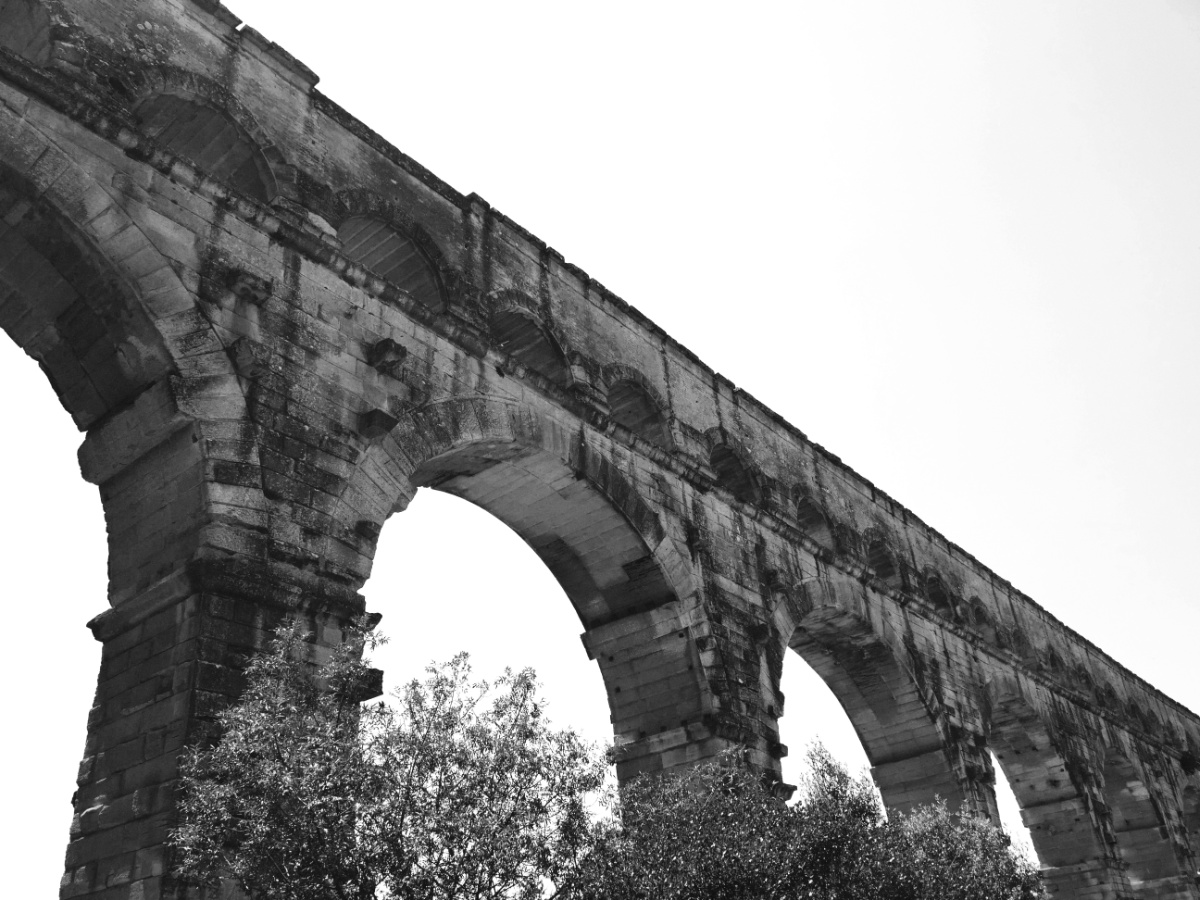Pont du Gard
There’s something eternal about all these Roman ruins, artifacts and buildings all over Europe. Still today it’s hard to imagine how an empire could operate on such a huge territory and in such high precision. The Romans really have been planers, builders and organizers. I wonder how much of that legacy is still present within the tribes, rites and morals of today. Europe is still full of Roman artifacts, but nonetheless you need to have a closer look on the map in order to find them. One of the best preserved aqueduct bridges is for sure the Pont du Gard in southern France. It was build in the first century AD and carried water over 50 km from the area of Uzes (Ucetia) to the Roman colony of Nimes (Nemausus). Near the town Vers Pont du Gard it crosses the river Gardon. Here the bridge needed to be exactly 48.8 m high in order to transport water from one end to the other without losing too much height. The whole aqueduct only allowed an average gradient of 1 cm in 182.4 m which is incredibly precise given the fact that it doesn’t only consist of several bridges but also of a long winding route through the hilly area. Building long tunnels was just impractical for the Romans of that time. So instead of taking the direct route from Uzes to Nimes which is roughly 20 km apart, they had to circumvent the hills of the Massif Central by plotting a V-shaped course around the hilly areas.
 1/640 s, f/6.3, ISO 200, 48 mm, Lumix DMC-GX8
1/640 s, f/6.3, ISO 200, 48 mm, Lumix DMC-GX8
Pont Du Gard consists of three levels of arches of different lengths and heights. The first level also was used as a road bridge. In the 18th century an additional, dedicated road bridge was added on the east side of the aqueduct next to the ancient building. The water conduit is carried at the very top of the third level at roughly 49 m above the river Gardon. Pont du Gard today is 275 m long while its original length was about 360 m. The bridge was built out of limestone largely without the use of mortar or clamps. 800 to 1000 workers worked for roughly 15 years to finish the project.
 1/1300 s, f/6.3, ISO 200, 28 mm, Lumix DMC-GX8
1/1300 s, f/6.3, ISO 200, 28 mm, Lumix DMC-GX8
For centuries Pont du Gard has been a tourist attraction. In 1996 a new visitor center nearby has been built in order to pedestrianise the whole area. Since then the valley around the bridge has become much quieter and easier to enjoy. Today it’s maybe a 10 to 15 Min walk from the visitor center to the aqueduct. The additional bridge from the 18th century is open for pedestrians only, so it’s possible to literally touch the old limestones with your own hands. On the opposite site of the river there’s a quiet, shady path up the hill which leads to several observation points. From there it’s possible to take a wonderful look at the west side of the structure. You can see the whole bridge spanning from one side of the valley to the other side. It’s beautiful to visit Pont du Gard in the afternoon or evening when the sun paints the west side of the yellow limestone into a deep yellow, almost reddish color.
 1/640 s, f/6.3, ISO 200, 28 mm, Lumix DMC-GX8
1/640 s, f/6.3, ISO 200, 28 mm, Lumix DMC-GX8
I guess what makes Pont du Gard so aesthetically pleasing to the eye is this a bit old fashioned stacking of different levels of regular arches. Today we would call it inefficient but even some later Roman aqueducts like the aqueduct bridge in Segovia abandoned this old technique in favour of light and very tall, slender piers. But definitely Pont du Gard has this very classical, iconic look.
 1/400 s, f/6.3, ISO 200, 28 mm, Lumix DMC-GX8
1/400 s, f/6.3, ISO 200, 28 mm, Lumix DMC-GX8
During summer it’s also possible to swim in the river Gardon. There are several little beaches on both sides of the aqueduct. The view from a little boat or canoe while paddeling under the bridge is breathtaking as well. It’s not an immediately necessary thing to do but of course using the water of the river as a foreground is an almost archetypal way to set the scene for this ancient building.